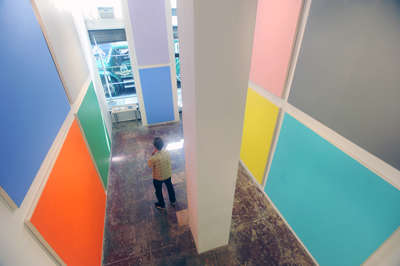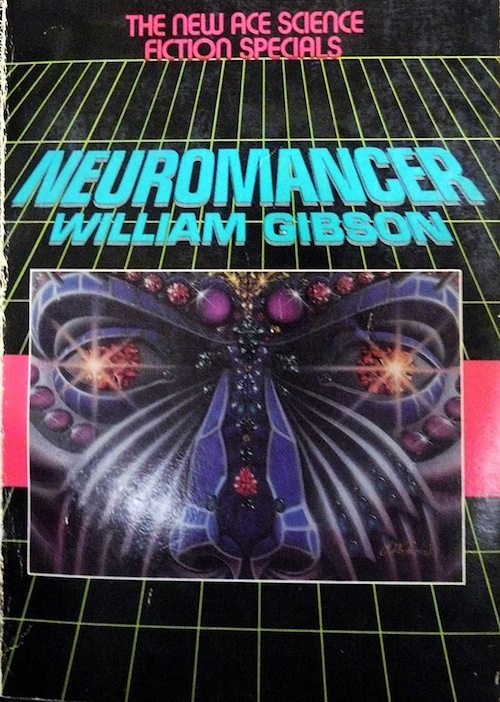Above: Whip It, based on Gravity’s Rainbow
There are no art galleries on the beach, which means it’s finally time for some quality fiction. (No, Marx isn’t beachy.) This installment: books which inspire artists. Often, this means vivid, sensual imagery, and obscure classics that’ll not only make you smarter, but a little cooler, too. And hey, thanks to Amazon, makes us a little richer!
Gravity’s Rainbow, 1973, Thomas Pynchon
Thomas Pynchon’s modern classic winds through a WWII hellscape of bombings and mind control. Its rich, hallucinatory prose compelled artist Zak Smith to illustrate all 760 pages, which were shown at the 2004 Whitney Biennial. Elements also inspired Devo’s “Whip It” (see wiki) and Laurie Anderson’s 1984 song “Gravity’s Angel.” It’s on everybody’s shelf in art school. Suffice it to say, you need this book.
Lush Life: A Novel, 2008, Richard Price
This crime novel is also a portrait of the Lower East Side: the dirt beneath the glossy facade, shaped in part by the new wave of art galleries. So it seems all too fitting that the tables turned once again, when, in 2010, Lush Life inspired a four-part summer show in that neighborhood.

Carriage Trade's 2011 show of "Reena Spaulings" character Henry Codax (Image courtesy of downtownmagazinenyc.com)
Reena Spaulings (Semiotext(e) / Native Agents), 2004, Bernadette Corporation
It’s hard to imagine a more direct impact on the art world than that of Reena Spaulings, a novel born of the art world, which has now become the art world. The book, group-authored by the artist collective Bernadette Corporation, tells a rags-to-riches story about a young female museum guard-turned-model. Its characters regularly have their own art shows, and even run the similarly-elusive gallery Reena Spaulings Fine Art on the Lower East Side. This one’s for you, art world.
Neuromancer, 1984, William Gibson
Count it an eerie coincidence that the cult classic Neuromancer came out in 1984, as many consider this a visionary dystopia story. The book basically legitimized cyberpunk lit, and was the first to win the three biggest awards in sci-fi (Hugo, Nebula, and Philip K. Dick); Gibson also introduced the idea of the Matrix, a globally interconnected network. In the art world, Chris Cunningham was rumored to have discussed a film adaptation, which never panned out. More recently, the novel’s main character Case inspired “Case,” an installation and performance by artist Brody Condon.
Crash: A Novel, 1973, J. G. Ballard
Also on the cyberpunk train, sci fi writer J. G. Ballard’s postmodern portrait of technology made him a cyberpunk forefather. Crash uses car crashes to represent technology as an extension and expression of the body, violence, angst, and arousal. Director David Cronenberg so liked the book, he turned it into a film. Gagosian turned it into a group show. Ballard’s preceding book The Atrocity Exhibition also inspired Harley Cokeliss’ 1970 documentary Crash!, which our readers may have seen at last year’s “Ghosts in the Machine.” And thanks to Baudrillard, Ballard’s also immortalized in art theory:
…Crash is the first great novel of the universe of simulation, the world that we will be dealing with from now on: a non-symbolic universe but one which, by a kind of reversal of its mass-mediated substance (neon, concrete, cars, mechanical eroticism), seems truly saturated with an intense initiatory power.

Man Ray, "Gertrude Stein in her salon writing," 1920 (Image courtesy of http://innerspaceinteriordesign.blogspot.com/ Beinecke Library, Yale University)
The Making of Americans, 1925, Gertrude Stein
No reading list would be complete without mention of Gertrude Stein. Thanks to her deep involvement with the art and literary world (detailed in “The Autobiography of Alice B. Toklas”), her name still tends to regularly orbit museum shows. Plus, her forward-thinking and independent lifestyle never fails to captivate contemporary art world imaginations, from painter Hilary Harkness to watchdogs of the National Portrait Gallery. And if the notoriously long The Making of Americans is too much for a beach read, you can always drop into Triple Canopy’s annual marathon readings.






Comments on this entry are closed.